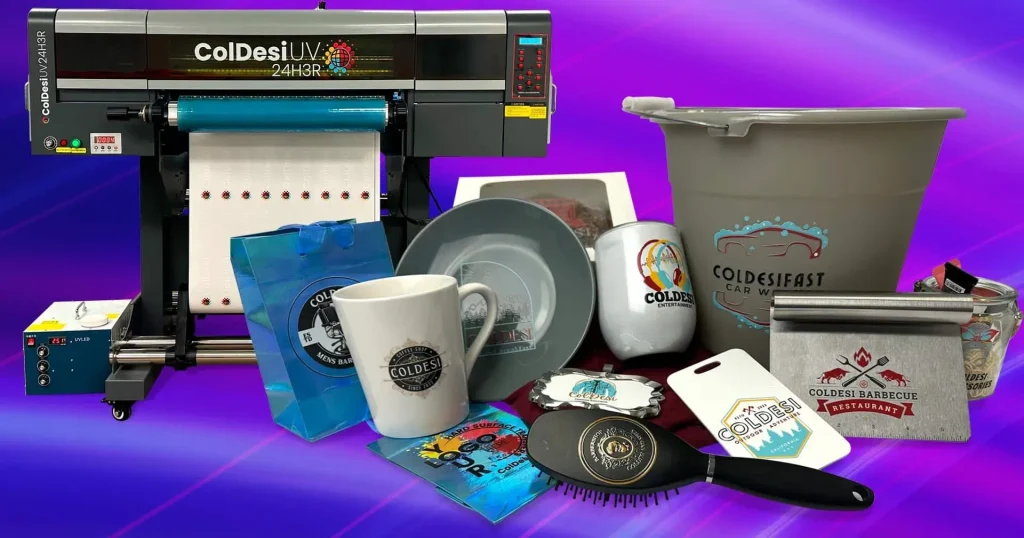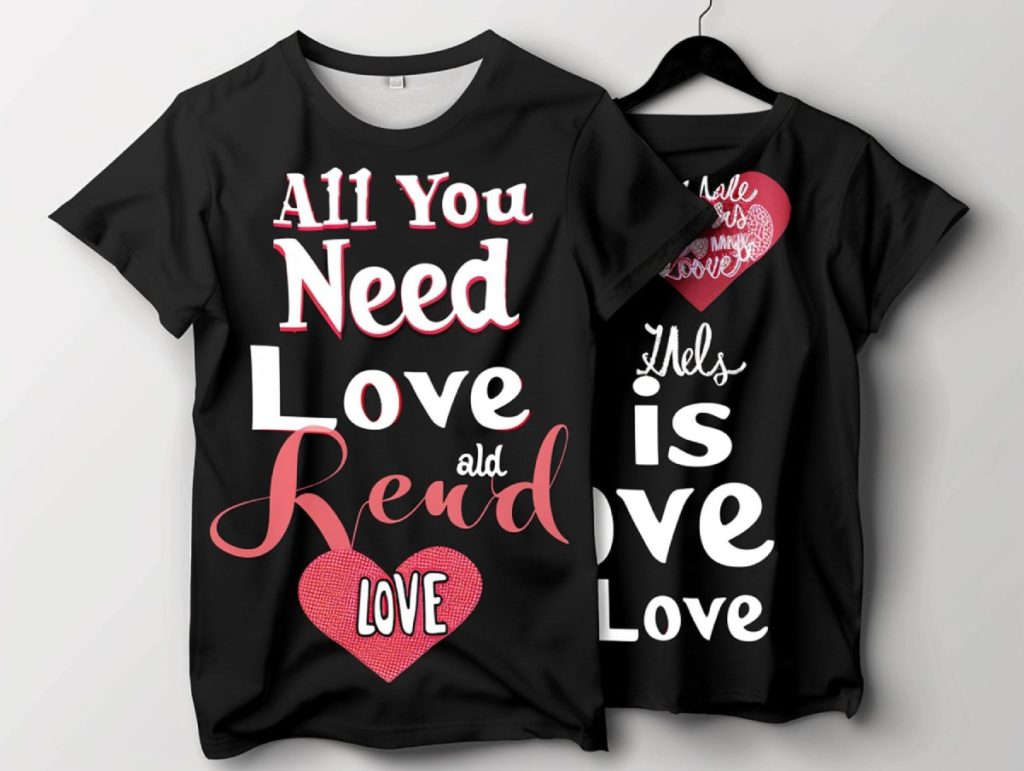In the ever-evolving landscape of business printing solutions, **UV DTF printing** has emerged as a revolutionary method, offering unparalleled advantages over traditional printing techniques. This state-of-the-art technology employs ultraviolet light to cure ink, resulting in vibrant colors and remarkable durability on various surfaces. Unlike conventional methods that may struggle with substrate compatibility, UV DTF excels, enhancing print quality while ensuring swift production times. As businesses strive for cost efficiency and high-performance outputs, UV DTF offers a compelling alternative to traditional options, prompting many to reconsider their printing approaches. Embracing this innovative printing technology can not only improve the visual appeal of your products but also meet the growing demands for sustainability in the printing industry.
Also known as ultraviolet direct-to-film printing, **UV DTF printing** represents a significant breakthrough in the world of printing technologies. This process leverages UV light to solidify inks onto various substrates, providing excellent print quality that rivals more established methods. As companies seek versatile and sustainable business printing solutions, the advantages offered by UV DTF become increasingly valuable. From its capacity to print on unconventional materials to its superior durability, this printing method stands out as a promising choice for enterprises looking to modernize their operations and enhance visual output. Understanding the capabilities of UV DTF will help businesses find a more efficient and innovative path in today’s competitive market.
The Advantages of UV DTF Printing
UV DTF printing has revolutionized the printing landscape by providing remarkable advantages over traditional methods. One of the primary benefits is its ability to produce vibrant and precise colors on various substrates without the limitations often seen in traditional printing techniques. The use of UV light to cure ink not only enhances the colors but also ensures strong adhesion, resulting in prints that are both visually striking and durable against wear and tear. This makes UV DTF particularly appealing for businesses looking to create high-quality promotional materials that stand the test of time.
Additionally, the rapid printing speed of UV DTF allows for quicker turnaround times, which is a significant advantage in today’s fast-paced business environment. This technology can accommodate a wide range of projects, including small runs and customized orders, without sacrificing quality. As businesses increasingly seek solutions that blend quality with efficiency, UV DTF printing has emerged as a go-to option for those looking to maximize their production capabilities.
Traditional Printing Techniques Overview
Traditional printing encompasses various methods such as offset, screen, and gravure printing, each with its unique processes and applications. While these methods have been tried and tested over the years, they often come with certain drawbacks, including longer production times and limited substrate compatibility. For instance, while offset printing can deliver excellent quality on paper, it may struggle with non-porous materials, restricting its versatility in meeting diverse customer demands.
Furthermore, traditional printing methods generally require more drying time due to the water-based or solvent inks used, which can hinder quick production cycles. This can be particularly problematic for businesses that need to fulfill urgent orders swiftly. Although traditional methods possess their strengths, they often fall short when it comes to adapting to the modern demands of businesses seeking efficient, high-quality printing solutions.
Evaluating Print Quality Across Platforms
When it comes to print quality, UV DTF printing stands out due to its superior durability and resistance to environmental factors. The UV-cured inks used in this process can endure various conditions, making them ideal for outdoor applications where exposure to elements is a concern. In contrast, traditional printing methods may not offer the same level of vibrancy or longevity, particularly on non-traditional substrates. This inconsistency can affect a business’s credibility, especially if their printed materials do not meet customer expectations for quality.
Quality control is crucial in the printing industry, and UV DTF provides a more consistent output across different jobs and materials. The precision of the UV printing process allows for intricate designs and fine details to be captured accurately, which is vital for branding and marketing materials. Businesses that prioritize print quality are increasingly recognizing the advantages that UV DTF brings to the table.
Cost Efficiency in Printing Solutions
Cost efficiency is a critical factor for many businesses when choosing a printing method. While UV DTF printing may have higher upfront equipment costs, the long-term benefits often outweigh these initial investments. The durability of UV-cured prints means reduced reprints and waste, translating to significant savings over time. Additionally, with the capability to produce high-quality prints in smaller batches, businesses can avoid excess inventory and manage costs more effectively.
On the other hand, traditional printing can sometimes appear cheaper for large volume runs. However, the cumulative costs associated with setup times, raw materials, and waste can quickly add up, making it less cost-effective for smaller print jobs. Businesses looking to optimize their budgets while maintaining quality standards often find that UV DTF provides a more balanced approach to printing solutions.
Sustainability in Modern Printing Technologies
As sustainability becomes a key concern for many consumers, UV DTF printing presents an environmentally friendly alternative to traditional methods. The inks used in UV DTF printing emit fewer volatile organic compounds (VOCs) compared to many conventional inks, which can contribute to air pollution and health hazards. Many businesses are now seeking to align their operations with eco-conscious practices, and adopting UV DTF technology can help meet these sustainability goals without compromising on print quality.
In contrast, the push for green printing solutions in traditional printing often comes with higher costs and still faces limitations in terms of ink performance and substrate compatibility. While eco-friendly inks are available, they may not provide the same level of durability and vibrancy as UV-cured inks, which can deter businesses from fully transitioning to these options. Therefore, for companies looking to enhance their sustainability efforts, UV DTF not only meets environmental standards but also enhances operational efficiency.
Versatile Applications of UV DTF Printing
The versatility of UV DTF printing is one of its most significant advantages. This technology can seamlessly print on a vast array of substrates, from textiles and paper to metals and plastics. This capability allows businesses to diversify their offerings and cater to a broader customer base without the limitations that traditional printing methods impose. For instance, companies can create customized promotional products or even unique décor items, all in one production run.
Conversely, traditional printing methods tend to be more specialized, often focusing on a specific type of material or application. This may limit the growth potential for businesses looking to explore new markets or product lines. By leveraging the flexibility of UV DTF technology, companies can not only enhance their product range but also respond more adeptly to market demands, giving them a competitive edge in the dynamic printing industry.
Frequently Asked Questions
What are the main advantages of UV DTF Printing over Traditional Printing?
UV DTF Printing offers several advantages over traditional printing, including superior print quality due to vibrant colors and durability. Additionally, it provides faster print times and can adhere to a wider variety of surfaces compared to traditional methods.
How does the print quality of UV DTF Printing compare to Traditional Printing?
The print quality of UV DTF Printing is generally superior to that of Traditional Printing, thanks to the use of UV-cured inks. These inks provide vibrant colors that are more resistant to wear and tear, resulting in longer-lasting prints.
Is UV DTF Printing more cost-efficient than Traditional Printing?
While UV DTF Printing may have higher initial setup costs, it is often more cost-efficient in the long run due to reduced waste and faster turnaround times. Traditional Printing can be cheaper for large quantities but may incur higher costs for smaller runs.
Can UV DTF Printing be applied to a variety of materials like Traditional Printing?
Yes, UV DTF Printing is highly versatile and can be applied to various substrates including plastics, metals, and textiles. In contrast, Traditional Printing methods may have limitations on the types of materials they can print on.
What sustainability benefits does UV DTF Printing offer compared to Traditional Printing?
UV DTF Printing typically emits fewer volatile organic compounds (VOCs) than some traditional printing inks, making it a more environmentally friendly option. As sustainability becomes increasingly important, UV DTF provides a compelling alternative without sacrificing quality.
What printing technologies are available in UV DTF Printing that differ from Traditional Printing?
UV DTF Printing employs advanced printing technologies that cure ink with ultraviolet light, allowing for rapid drying and adherence to diverse surfaces. Traditional Printing techniques, such as offset and screen printing, often require longer drying times and are limited in substrate compatibility.
| Criteria | UV DTF Printing | Traditional Printing |
|---|---|---|
| Technology | Utilizes UV light to cure ink, suitable for various surfaces | Includes methods like offset and screen printing, often requires drying time |
| Print Quality & Durability | Offers superior color reproduction and durability against wear and chemicals | Quality can be inconsistent, depending on substrate and ink used |
| Cost Efficiency | Higher initial costs but lower long-term expenses due to durability | Lower costs per unit for large quantities, but can exceed costs with waste |
| Sustainability | Emits fewer VOCs, making it a more eco-friendly option | Eco-friendly options exist but are generally costlier |
| Application Versatility | Prints on various substrates including textiles and rigid materials | Limited to specific materials which can hinder business growth |
| Market Trends | Increasing adoption among businesses due to efficiency and high quality | Established methods, but challenges in adapting to new tech trends |
Summary
UV DTF printing stands as a modern solution in the evolving printing landscape, offering significant advantages over traditional printing methods. With its ability to produce vibrant and durable outputs on various materials, UV DTF printing is increasingly favored by businesses looking to enhance quality and efficiency. As sustainability becomes a focal point for many companies, UV DTF inks also present a more environmentally friendly option, reducing harmful emissions. Embracing UV DTF printing not only aligns your business with contemporary technological advancements but also positions you competitively in a market that values quality and sustainability. Ultimately, the shift towards UV DTF printing could prove revolutionary for any business aiming to meet diverse client needs while fostering eco-friendly practices.



